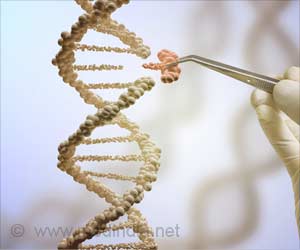
Childhood obesity, affecting nearly 20% of children and teens, has severe implications for their health, increasing the risk of arthritis, heart conditions, and metabolic problems. To combat this, the American Academy of Pediatrics recommends early and intensive treatment(1✔ ✔Trusted Source
Gene therapy for fat-1 prevents obesity-induced metabolic dysfunction, cellular senescence, and osteoarthritis
).
In response, researchers at Shriners Children’s St. Louis have dedicated the last four years to developing a novel solution. Their breakthrough gene therapy can transform harmful fatty acids into beneficial ones, offering a promising way to mitigate the risks of obesity-related health issues, particularly arthritis, for young people struggling with obesity.
Advertisement
Gene Therapy Breakthrough for Childhood Arthritis Prevention
“We’ve learned that the number one preventable risk factor for arthritis in children is being overweight,” said Dr. Guilak.
“Our typical response is simply telling kids to lose weight, without addressing the larger issue. Childhood obesity has become an epidemic, and as a result, arthritis is becoming increasingly common in children. One of our key findings is that it’s not just the obesity itself that’s harmful, but also the diet. The types of fatty acids children consume play a significant role in a child’s weight gain. And once children are obese, it opens the door for other significant health problems that can be hard to reverse.”
Dr. Tang said their gene therapy technique involves utilizing an inactive virus, adeno-associated virus (AAV), to deliver the gene for a specific enzyme into cells. The new gene therapy automatically converts highly inflammatory Omega-6 fatty acids to Omega-3 fatty acids, which are better for the body’s metabolic health. Dr. Guilak said Omega-6 acids, which come from fatty foods and vegetable oil such as in fried foods, tend to promote inflammation and can lead to health issues such as arthritis, heart disease, and metabolic problems.
Advertisement
Post-Traumatic Arthritis in Children: A Common and Preventable Condition
Omega-3s, as found in fish and certain nuts, can support a healthier metabolic profile by improving insulin sensitivity, promoting fat metabolism, and reducing inflammation and the risk of obesity-related diseases. Dr. Natalia Harasymowicz, co-lead of the study, said that their gene therapy was also able to lower the number of pro-inflammatory cells that are crucial in promoting obesity-related inflammation and arthritis.
In this study, the researchers studied a type of arthritis that is very common in children, termed “post-traumatic arthritis”, caused by injury to the knee such as a tear in the meniscus tissue that serves as a stabilizer and cushion in the knee.
Advertisement
Gene Therapy: A Promising Solution for Preventing Childhood Arthritis and Promoting Healthier Lives
The team found that one injection of the gene therapy significantly decreased the effects of a high-fat, omega-6-rich diet on overall metabolic health and knee arthritis. Of particular interest was the finding that diet-induced obesity led to premature “aging” in these mice, which was prevented by gene therapy.
“What we are observing is that obesity results in old knees in young patients”, said Dr. Guilak.
“The modern diet, especially in the United States, tends to be high in Omega-6s and low in Omega-3s, which can lead to an imbalance, especially for kids. The gene therapy we developed will automatically convert omega-6 to omega-3 fatty acids in your body, effectively turning bad fats into good fats. Arthritis can be a very painful and debilitating condition for children so we’re hopeful that this research will help reduce the risk of it developing and make treatments more effective. The implications for how this research might be used in the future are vast but we’re excited about the potential for it to help kids lead healthier lives.”
Reference:
- Gene therapy for fat-1 prevents obesity-induced metabolic dysfunction, cellular senescence, and osteoarthritis – (https://www.pnas.org/doi/10.1073/pnas.2402954121)
Source-Eurekalert



